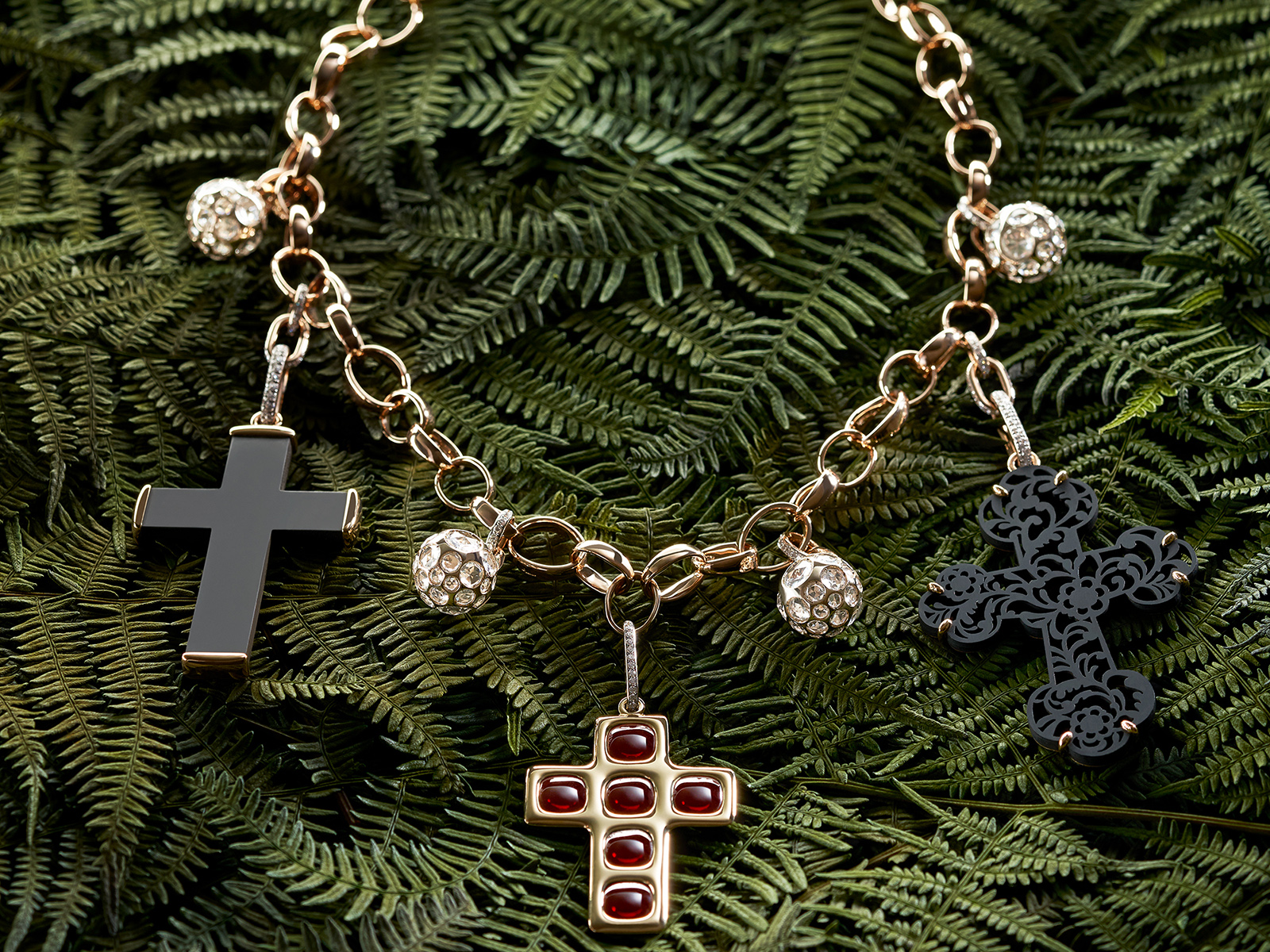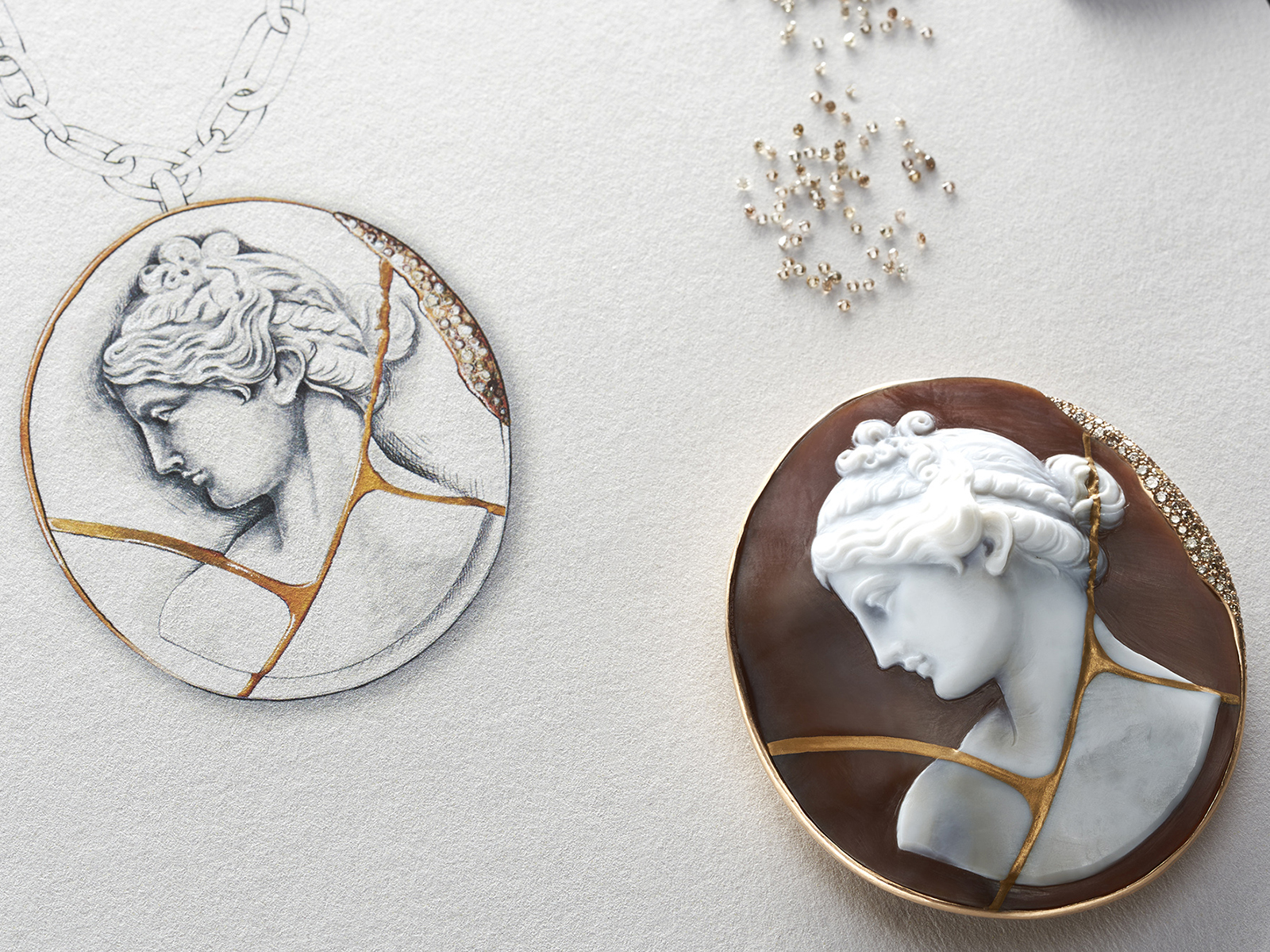Back to the Future with Pomellato
Italian brand Pomellato has created high jewelry using inspiration from the archives and, in some cases, mending and reusing stones
Italian brand Pomellato has created high jewelry using inspiration from the archives and, in some cases, mending and reusing stones
“The pandemic made many people reevaluate things” says Sabina Belli, CEO of one of Italy’s foremost jewelry brands, Milan-based Pomellato. “I think it acted as a filter—people questioned how they lived and how they worked. They looked at their practices, their possessions, their perceptions. And this recalibration applied to companies, too.
“Certainly, we did a great deal of thinking during that great pause. We were working on a new collection, but with our stores closed, a slowdown in sales, and so much more time to consider, we wondered if we should create pieces that reflected this shift in our collective consciousness,” she says.
One hundred percent of our gold has been responsibly sourced, and all our lapis lazuli is from ethical mines. We are relentless in our quest to achieve the same for all our gems—Sabina Belli

What resulted was a first for Pomellato itself, and seemingly also for the high jewelry business as a whole: in designing the dazzling La Gioia collection, launched in Paris in 2021, the company did something no other top-end brand had done before—it created an entire new range of precious jewelry from vintage pieces kept in its archives.
High jewelry refers to the most valuable items, often one-of-a-kind pieces, crafted by hand, sometimes over several years, and featuring the finest quality gemstones.
“The idea came from a conversation our creative director, Vincenzo Castaldo, was having with the artist Sheva Fruitman, who is now our sustainability design consultant,” says Belli. “Sheva suggested we look to the past to make something for the future.
“Her comment—a spontaneous thought—inspired Vincenzo. I think he saw immediately how fitting such a collection would be, not only as a beautiful expression of Pomellato’s long-standing commitment to sustainability, but also as a testament to these times—a message of rebirth, renewal, and revival.”

One necklace, for example, uses three oversized crosses from three different years—1990, 2003, and 2013—while 2006’s classic Eva cameo earrings, with their dramatic snake motif, have been adorned with eye-catching blue topazes for a bolder look.
I was drawn to the idea of celebrating scars as a sign of strength. The kintsugi philosophy, which demonstrates how damage can be healed in such an aesthetically appealing way, was very compelling—Vincenzo Castaldo
La Gioia, which means joy, is an elegant demonstration of continuity. Each necklace, each ring, each pair of earrings shows that old items need not be redundant. Tastes change, of course, says Belli, but quality items, which have a history, are of sentimental value, or are made with skill and a “strong intention” can be given a second life, so that they continue to bring joy to those who own them.

“It is interesting to me to see how the pandemic has precipitated an appreciation of timelessness rather than transience. Even among the young there is a growing awareness that fast design can be shallow and, worse, exploitative, of planet and people. Pomellato has always stood for the opposite of that,” Belli says.
Enduring designs that are brought to life by the hands of Italian goldsmiths have been at the heart of Pomellato since it was founded by Pino Rabolini in 1967, and this, coupled with more recent commitments to adhere to the highest standards of accountability and ethical sourcing of precious metal and gems, has made the brand a leader in eco-sustainability.

“Kering [a luxury conglomerate which owns other brands including Alexander McQueen] acquired the company in 2013 and put all the resources at its disposal to source only clean raw materials,” says Belli. “The supply chains for luxury jewelry are long and, historically, quite opaque, but technological advances such as blockchain have brought full traceability so much closer. Since 2018, 100 percent of our gold has been responsibly sourced, and all our lapis lazuli is from ethical mines. We are relentless in our quest to achieve the same for all our gems. It is an ongoing process, but we will get there.”
There are so many facets to being a socially responsible brand, and all areas must be addressed all the time. Waste is a huge burden on the planet, and in an eloquent and extraordinarily lovely response to this, Pomellato launched the Kintsugi range in February 2021, which used broken stones that would otherwise have been discarded.

Working with Maya Higuchi, a Japanese master of kintsugi—the art of fixing things with gold, so that flaws are highlighted and rendered beautiful—Castaldo created rings, earrings, and pendants that embody recovery and healing.
“I was drawn to the idea of celebrating scars as a sign of strength,” he says. “The kintsugi philosophy, which demonstrates how damage can be healed in such an aesthetically appealing way, was very compelling. Repurposing rather than throwing away items is so relevant to our own lives and pivotal to our commitment to sustainability. Kintsugi is a very poetic response to making good, to restoring things. It is profound expression of appreciating, including, and indeed finding true beauty in things that others might consider unworthy.”
Banner image: Pomellato’s Iconica necklace